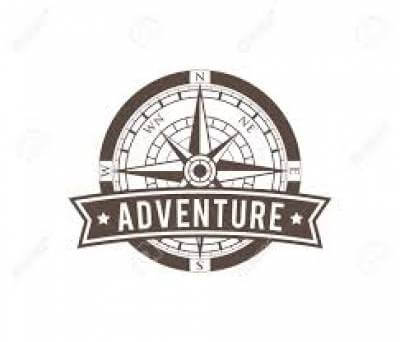EVEREST BASE CAMP TREK
The Everest Base Camp Trek is one of the most iconic trekking adventures in the world. Located in the Khumbu region of Nepal, this journey takes you through stunning Himalayan landscapes, charming Sherpa villages, and high-altitude trails that lead to the foot of the world’s tallest mountain — Mount Everest. For many, reaching Everest Base Camp is a dream come true and a once-in-a-lifetime experience.
The Everest Base Camp Tour typically begins with a scenic flight from Kathmandu to Lukla, followed by a trek through places like Phakding, Namche Bazaar, Tengboche, Dingboche, Lobuche, and finally to Everest Base Camp itself. Along the way, trekkers pass through Sagarmatha National Park, a UNESCO World Heritage Site rich in biodiversity and panoramic views of peaks like Ama Dablam, Lhotse, and Nuptse. The journey also offers deep insight into the local culture, with visits to ancient monasteries and warm interactions with the Sherpa community.
Many adventurers choose the Everest Base Camp Hike not just for the physical challenge, but for the spiritual and personal reward. It doesn’t require mountaineering skills, but a good level of fitness and mental preparation is essential due to the high altitude and length of the trek.
A well-planned Everest Base Camp Trek Itinerary usually takes around 12 to 14 days, allowing for proper acclimatization and rest days. Key highlights include a visit to Kala Patthar, where trekkers enjoy some of the best close-up views of Mount Everest at sunrise, and the thrilling sense of achievement upon reaching Everest Base Camp, standing at an altitude of 5,364 meters.
There are several types of Everest Base Camp Trek packages available, ranging from standard group tours to luxury options with upgraded lodges and helicopter returns. Choosing the right Everest Base Camp Trek package depends on your budget, time, and desired comfort level.
Whether you are an experienced trekker or a first-time visitor to the Himalayas, the Everest Base Camp Trek offers a life-changing adventure filled with natural beauty, cultural depth, and personal accomplishment. It remains one of the most rewarding journeys for travelers seeking the ultimate Himalayan experience.
ITINERARY
Day 1 : Arrival at Kathmandu and transfer to Hotel (1,350m).
Your amazing journey begins at Kathmandu. A staff member from Sherpa Teams will meet you at the airport and take you to your hotel in Thamel – the tourist hub of Kathmandu and a great place to buy those last-minute things you may require on the trek.
Day 2 : Guided Sightseeing of the Kathmandu Valley; Duration: 4-5 hours.
Today is a day of guided sightseeing in Kathmandu Valley. We will visit Pashupatinath, regarded as the holiest Hindu temple in Nepal and a place where pilgrims worship Lord Shiva (situated on the banks of the holy Bagmati River), Bouddhanath, a Tibetan Buddhist temple also known as ‘Little Tibet’ and then on to Swayambhunath (Monkey Temple). From Swayambhunath we head to the celebrated Durbar Square, a UNESCO World Heritage-listed site that is located opposite the old royal palace. Back at your hotel, you will have time to stroll around the narrow and winding streets of Thamel and relax in one of the many cafes or bars.
Day 3 : Fly to Lukla (2,804m) & trek to Phakding (2,640m) Duration: 4-5 hours.
An early morning 30 to 40-minute scenic flight takes us to Tenzing Hilary Airport at Lukla. We then follow the trail along the banks of the Dudh Koshi River and head to Phakding for the night.
Day 4 : Trek from Phakding to Namche Bazaar (3,440m) Duration: 5-6 hours.
Today is an easy day as we trek across several bridges over the Dudh Kosi River via the gorgeous villages of Toc-Toc, Benkar and Monjo before coming to the official entrance to Sagarmatha National Park. We then follow the trail along river flats for several hours and cross one final bridge before climbing a steep hill to Namche Bazaar, a thriving modern town with many facilities such as restaurants, hotels, internet cafes and banks.
Day 5 : Acclimatization day at Namche Bazaar (Hike to Everest View Hotel) Duration 3-4 hours.
We will spend the day at Namche Bazaar in order to acclimatize, which is very important before heading higher later on in the trek. Health experts vigorously recommend being active during this time in order to improve the acclimatization process. We may choose trekking to Thame or visit Khunde or spend this time exploring Namche Bazaar and visit the weekly market that is held on Friday evening and on Saturday morning. Your guide will also take you to see the Tourist Visitor Center located near the headquarters of the Sagarmatha National Park that has an interesting display of equipment of the first Everest climbers. You can also find information here about the flora and fauna of the region.
Day 6 : Trek to Tengboche (3,870 m) Duration: 5-6 hours.
Today we follow the fast flowing Dudh Kosi River as it gushes down from the mountains. There are also some stunning mountain views as we gradually head higher to 3860 meters at Tengboche Village, celebrated for its ornamental wall hangings, 6 meter Buddha, Tibetan musical instruments and bright colorful Lama robes. A highlight of the visit will be attending the evening prayer at the monastery that is peaceful and calming to your soul.
Day 7 : Trek to Dingboche (4,460m) Duration: 5-6 hours.
Today we have a less demanding trek to Dingboche – except for the last section where we cross a bridge and then have to climb a steep hill which acts as a reminder that we are now trekking at higher altitudes and will be more physically demanding than at lower altitudes. We will trek via the villages of Somare (4010m) and Orsho and further down the trail we arrive at a fork and take the left trail that heads to Pheriche Village (4410m).
Day 8 : Acclimatization day at Dingboche and hike to Chukkung Valley (4730m) Duration: 4-5 hours.
Today is our second day dedicated to acclimatizing. To stay active, as recommended by health specialists, we will ascend 400 meters to Nangkartshang Gompa that is situated on a ridge just north of Dingboche Village. From this location, we have magnificent views of the world’s 5th highest mountain Mt. Makalu (8,463m) and Mt. Ama Dablam. Depending on your energy level we may decide on heading to the summit at Mt. Nangkartshang (5090m).
Day 9 : Trek to Lobuche (4,900 meters) Duration: 5-6 hours.
Today we head to Dughla Village and then trek across the rocky slopes and the steep moraine at the base of the Khumbu Glacier. We then continue our ascent to Chupki Lhara that has an array of stones with Tibetan prayer flags placed as a memorial to climbers Scott Fischer (American) and ten-time Everest summiteer Babu Chiri Sherpa (Nepalese guide) who died while trying to climb to the summit of Mt. Everest. On the way to the Khumbu Glacier moraine, we can see many huge peaks right before our eyes: Khumbutse, Lingtren, Pumori, and Mahalangur Himal. This scene will have you captivated.
Day 10 : Trek to Gorak shep (5,180m) trek to EBC & overnight stay at Gorekshep Duration: 7-8 hours.
Today we head to our ultimate destination, slowly heading to higher elevations. On the way, we will pass Gorak Shep Lake and then later come to a monument in honor of the Indian mountaineers who have died while attempting to climb the mountain. Walking now is more physically tiring due to the thinner air at this higher altitude. The trail has rocks, moraine, and streams to cross before we reach EBC. The first thing we see on arriving at EBC is the assortment of colorful tents of mountaineers waiting for perfect conditions before attempting a climb to the summit. From EBC we can see Nuptse, Khumbutse, and Pumori and the snow glinting on their peaks. After a rest and scout around EBC, we head back to Gorak Shep for a well-deserved night’s sleep.
Day 11 : Hike to Kalapatthar (5,550m) at sunrise & trek to Pangboche (3,900 m) Duration: 7-9 hours.
This morning we need to be on the trail before daybreak with temperatures around -10 to -14C in order to capture the sunrise at Kala Patthar. There is also the chance of strong winds that will add the chill factor. In the east are the peaks of Lingtren, Khumbutse, and Changtse. Everest will also come into view. On arriving at the summit of Kala Patthar we will be elated as we take in the 360-degree views and especially the amazing views of Mt. Everest that appear right in front of us. This is a photo opportunity and a time to be sure your camera is fully charged to take some breathtaking snaps of Everest that will act as a reminder of this moment in the years to come. We will then return back to Pangboche for the night.
Day 12 : Trek Back to Namche Bazaar (3,440 m) Duration: 5-6 hours.
This morning we set off downhill to Debouche and will pass through rhododendron forest before coming to Tengboche, renowned for its Buddhist monastery as well as offering some fantastic views of the surrounding snow-covered peaks. We then descend to Phunki Thenga (3,250m/10,663ft) that sits on the banks of the Imja Khola (river). We then continue to Sanasa and on to Namche Bazaar where we will stay overnight.
Day 13 : Trek to Lukla (2,804 m) Duration: 6-7 hours.
Today we follow the trail back to Phakding on our last day on the trail. We should arrive at Lukla early enough to allow you time to explore the village and nearby countryside. At Namche Bazaar you can take a deep breath and look back on this amazing expedition and look back over your photos and catch up on emails to your family and friends. You can be proud of accomplishing this physically challenging trek. In the evening you will most likely want to celebrate and have a few drinks!
Day 14 : Fly back to Kathmandu; flight Duration: 30 minutes.
This morning we have a short 30 to 40-minute scenic flight back to Kathmandu and can look down over the immense Himalayan landscape. On arrival at Kathmandu, we will take you back to your hotel. You can spend the remainder of the day sightseeing or shopping around Thamel before your departure tomorrow.
Day 15 : Transfer to Tribhuvan International Airport.
Your adventure in Nepal ends today as a representative from Uma Holidays Travel & Tours takes you to the airport at least three hours prior to your scheduled departure. We hope that on your flight home you will look back on this great adventure to EBC and will be making plans for your next exciting journey in the Himalayas of Nepal. There is so much to see in Nepal, from climbing, kayaking, rafting, wildlife safaris and treks to far-off regions.
SERVICES
Cost Included In Your Package
- Airport transfer on arrival and departure by private vehicles
- 3 nights’ standard accommodation in a 3-star hotel in Kathmandu on a twin-sharing basis, including 2 breakfasts.
- Kathmandu Valley sightseeing by private Car/Jeep
- Three meals a day (Breakfast, Lunch, and Dinner, the main course) during the trek.
- One highly experienced Sherpa Team’s government-licensed, English-speaking local guide covering meals, flight, insurance, accommodations, and equipment for the guide.
- Strong, helpful Sherpa porters with proper safety equipment and walking equipment, his salary, food, accommodation, and insurance (one porter for two people).
- All the necessary documents, such as Sagarmatha National Park Fees and TIMS card (Trekking Information Management System)
- Trekking lodges or tea houses during the trek (standard teahouse)
- Use of a sleeping bag, a down jacket, a duffel bag, and walking poles (if you don’t have your own, to be returned after the trip is completed).
- An assistant guide for a group of 8 pax or above
- Round-trip flight from Kathmandu – Lukla - Kathmandu including applicable departure taxes
- Seasonal available fresh fruits every evening after dinner.
- Sherpa Teams' Certificate of Appreciation after the successful trek
- Sherpa complimentary free hiking T-shirt
- Oximeter to measure your oxygen and Pulse level during the trek in the mountain, it’s very useful for all the trekkers to be aware of the high altitude sickness.
- Emergency rescue operation assistance in arranging in case of complex health conditions (funded by your Travel Insurance)
- All government, Local taxes, and official Expenses
Cost Excludes
- Nepal entry visa fee (easy to obtain the visa on arrival at Tribhuvan International Airport – Kathmandu). USD 30 for 1a 5-day visa, USD 50 for 30 visa, and USD 125 for 90 D90-dayvisa.
- Extra nights' accommodation and meals before and after the trek
- Meals: Lunch and Dinner in Kathmandu
- International airfare
- Personal expenses such as shopping, hot and cold drinks, tea, coffee, mineral water, extra food, hot shower, hard and soft alcohol, snacks, hot and cold water, Wi-Fi, battery recharge fee, and extra porter
- Travel insurance - insurance has to cover emergency high-altitude rescue and evacuation .
- Personal clothes and trekking equipment
- Additional cost, the itinerary modifications or delay caused by factors beyond management's control, due to the weather conditions, illness, changes in government policies, strikes, and physical conditions, etc.
- Gratitude to the guides and staff (Recommended by Nepali culture )
- Any other expenses that are not mentioned in the Price "inclusive section" of this program
- NOTE: If you return earlier from the trek due to sickness or any problem, the money you paid for the flight, hotel, mountain room, food, etc. , is nonrefundable, and you will need to bear the expenses for the hotel, food, etc. in Kathmandu yourself.
EQUIPMENTS
The following information will give you some idea about what you need to bring for the trek. It is important you do not forget the essential items, as this will determine your comfort and safety on the trek. Equally important is that you do not burden yourself with unnecessary equipment on the trek.
- Sleeping Bag (Sherpa Teams will provide, but need to return after completing the trip)
- Duffel Bag (Sherpa Teams will provide,e but need to return after completing the trip)
- Fleece jacket or pullover
- Waterproof windbreaker or windcheater
- Thermal underclothes
- Rain poncho
- Down jacket (Sherpa Teams will provide, de but need to return after completing the trip)
- Fleece or wool trousers
- Sun hat or scarf
- Trekking pants (two pairs)
- Mittens or woolen gloves
- Hiking socks (several pairs)
- Moisture-wicking shirts, including t-shirts
- Trekking shoes or boots with spare laces
- Flip-flops or sandals for relaxing in the evenings
- Underwear (several pairs)
- Swimsuit or swimming costume
- Sunglasses
- Headlamp or flashlight/torch
- Sleeping bag (Sherpa Teams can provide this for you)
- Trekking poles (if desired)
- Hiking backpack with a capacity of at least 40 liters
- Small lock for your backpack
- Reusable water bottles (at least two liters)
- Water purification tablets or a filtration device
- Wash towel
- Basic first aid kit
Toiletries (tissues, toilet paper, moisturizer, lip balm, sunscreen, sanitary pads, hand sanitizer, nail clippers, a small mirror, toothbrush, toothpaste, glasses, contacts, etc.)
GOOD TO KNOW
Everest Base Camp Trek Overview
The Everest Base Camp Trek is an internationally-renowned journey that takes trekkers deep into the Khumbu region of Nepal. Spanning roughly 130 kilometers (80 miles, this trek offers a danger to witness a number of the most awe-inspiring perspectives of Mount Everest and its neighboring peaks. The journey takes you through Sherpa villages, alpine forests, across suspension bridges, and in the long run to the foot of the arena’s highest mountain. The trek is proper for those seeking out a journey that combines natural beauty, cultural immersion, and physical activity.
The Route: Starting Point to Base Camp
The trek starts offevolved off in Lukla, a small mountain town accessible via an interesting flight from Kathmandu. From there, trekkers take a look at a properly-hooked up course via Phakding, Namche Bazaar, Tengboche, Dingboche, Lobuche, and Gorak Shep earlier than reaching the very last vacation spot, Everest Base Camp. The path includes numerous days of acclimatization, in which trekkers rest in villages to adapt to the increasing altitude. Each step brings new views and demanding situations, including glacier crossings and rocky paths. At Base Camp, trekkers stand on the foot of Everest and experience the sheer scale of the mountain.
Best Time to Trek Everest Base Camp
The excellent months to trek Everest Base Camp are in the direction of spring (March to also can) and autumn (September to November) seasons. Within the direction of those periods, the weather is stable, the skies are clear, and the temperatures are mild—the best situations for trekking. Spring offers wildflowers and lush landscapes, even as autumn offers crisp air and first-rate mountain views. It’s essential to avoid hiking within the monsoon season (June to August), as heavy rains can motive landslides and muddy trails, making the trek risky.
Altitude and Acclimatization
One of the maximum critical factors to consider on the Everest Base Camp Trek is altitude. The trek reaches an elevation of 5 Symptoms364 meters (17,598 toes) at Base Camp, with many stops higher than three 500 meters (11,500 ft). To reduce the threat of altitude sickness, trekkers need to take time to acclimatize. This consists of sluggish and everyday ascents, with rest days at key points like Namche Bazaar and Dingboche. Signs of altitude illness can include headaches, dizziness, and shortness of breath, and it’s critical to pay attention to your frame. In immoderate instances, the trek may additionally additionally want to be cut brief.
Packing List for Everest Base Camp Trek
Packing nicely for the Everest Base Camp Trek is essential for comfort and protection. Crucial gadgets encompass:
- Garb: Layered clothing for heat (fleece, down jacket, thermal wear) and lightweight hiking clothes.
- Shoes: strong hiking boots with ankle support and multiple relaxed sandals.
- Sound asleep bag: An extreme-altitude snoozing bag rated for sub-zero temperatures.
- Water bottles and purification tablets: stay hydrated and make sure at access to ingesting water.
- First-beneficial useful resource package: simple factors for injuries, altitude infection treatment, and personal prescriptions.
- Headlamp: With greater batteries for night treks or in case of power outages.
- Sunscreen and lip balm: UV safety is crucial at excessive altitudes.
- Hiking poles: useful for stability on rocky paths.
Physical Fitness for the Everest Trek
At the same time, because the Everest Base Camp Trek doesn’t require severe mountain climbing talents, but it does call for an immoderate degree of bodily fitness. P Priorriorr to your trek, it is beneficial to educate endurance, patience, and stamina. Cardiovascular sports activities like walking, cycling, and trekking with a loaded backpack will prepare you for long days on the path. Attention to leg strength, as you’ll be climbing and descending steep terrain. It's also important to exercise on foot at higher elevations, if viable , to simulate conditions similar to those at the trek.
Tea Houses and Accommodation
Alongside the Everest Base Camp, most trekkers stay in traditional tea houses, which can be small guesthouses run by means of neighborhood households. These tea houses offer a hearty meal and an area to sleep. Rooms normally have simple bedding, and shared lavatory facilities are commonplace. At the same time as the lodging is basic, but it offers a secure refuge after a protracted day of hiking. Food commonly encompasses rice, dal, lentils, potatoes, and veggies. Tea homes are also places to have interaction with fellow trekkers and locals, exchanging stories and stories.
The Sherpa Culture and Local Traditions
The Sherpas are an indigenous ethnic group local to the Khumbu region. They may be acknowledged for their splendid mountain climbing capabilities and feature performed an essential role in guiding trekkers and climbers to Everest. Along the trail, you may have the risk of experiencing Sherpa tradition, which includes Buddhist traditions, monasteries, and prayer flags. Sherpas are rather heat and welcoming, and their wealthy subculture offers trekkers a unique enjoy. Be sure to analyze a piece about their history and traditions, as they'll enhance your adventure.
Health and Safety on the Trek
Staying wholesome at the Everest Base Camp trek is critical for a successful journey. Drink hundreds of water to stay hydrated, eat well-balanced food, and make sure to rest frequently. Constantly supply a simple first-aid kit and any non-prescription medicinal capsules. In case you revel in symptoms and symptoms and signs and symptoms of altitude illness, it’s vital to descend to a lower altitude immediately. Many trekkers use courses and porters for brought safety, as they may be experienced in dealing with fitness and safety troubles. Courses can spot the early signs of contamination and endorse on at the same time as to relaxation of are searching for scientific interest.
Preparing Mentally for the Trek
The Everest Base Camp Trek is not simply physically demanding, but mentally difficult too. It’s crucial to live with wonder and focus in the course of moments of fatigue or discomfort. Lengthy, steep climbs, restricted facilities, and the unpredictable climate can sometimes check your progress. Intellectual training entails placing practical expectations, focusing on the breathtaking perspectives, and taking time to understand the cultural elements of the trek. It’s also useful to construct a sense of inner calm and mindfulness, especially in the course of moments of altitude illness or exhaustion.
MAP
PHOTOS/Videos
Departures
Select a departure month
Fill out the form below and a Travel Expert will reach out to create your perfect tour.
FAQS
I have never hike before, can I make it to Everest Base Camp?
Yes, you can. No matter who you are, as long as you are reasonably fit, can walk for 5-6 hours a day and trek/hike a few uphills, Sherpa Expedition and Trekking Trekking team will support you to the fullest to transform your dream of standing at Everest Base Camp into reality.
What is the best Season for trek to Everest Base Camp?
The month of March to May in Spring and September to December in autumn seasons are considered the best for the Everest Base Camp Trek as the weather conditions become favorable during this time, providing you with good visibility and a suitable atmosphere for Everest Base Camp trekking.
Is there an age limit for Everest Base Camp trekking?
No, there is no age limit for the trek to Everest Base Camp but, you need to be in good physical shape and have a positive attitude. We also suggest you to prior to the excursion though we suggest you to please see your doctor and obtain necessary permission and advice, as well as medications for traveling in extreme altitude prior to the excursion.
What are the meals on the Everest Base Camp trekking like?
During trekking, you will be served meals in the teahouses. Typical meals are noodles, rice, pasta or potato dishes along with vegetables and egg/chicken/meat dishes. Other items mostly served as breakfasts include Tibetan, egg, pancake, bread, porridge, muesli, and toasts with peanut butter and honey.
What kind of accommodation will be provided during the Everest Base Camp trekking?
A teahouse trekking accommodation will be made for you for the Everest Base Camp trekking whereby you will be able to stay at tea house(Local lodge) and have wholesome food and net and clean comfortable bed throughout your trekking journey. This form of arrangement also allows you to carry less baggage; you can trek at your own pace and enjoy the Everest panorama on your own schedule. It is also an eco-friendly way of trekking whereby trekkers can have more contact with the local's sherpa peoples.
Are there toilet facilities at the tea houses? What opportunities will I have for shower during trekking?
Most of the teahouses on the Everest Base camp trail have squat toilet facilities but recently built lodges have western-style toilets as well. Nowadays, flush toilets are also being introduced with number of increasing foreign mountaineers each year. It is highly recommended to carry your own toilet paper and other required toiletries. Hot shower facilities are available till Gorakshep. The most common type is a bucket shower, usual buckets with tap filled with hot water and placed in a shower room. Hot shower costs from US$ 4 to 15 per use and the price increases along with the elevation. Attached bathrooms and toilets are not available unless you book for a luxury lodge during the EBC trek.
What kind of clothes do we require for the trekking and is it possible to purchase it in Kathmandu before the start of the trip?
What you want to wear depends on you but we suggest you wear warm clothes during the Everest Base Camp trekking. A down jacket, thermal longs and top, comfortable trekking trousers, t-shirts, fleece, windproof jacket, hat, scarf, and gloves might be useful. There are numerous trekking shops in the Thamel area of Kathmandu where you can get all of these items in both local and branded stores alike. Sherpa Expedition and Trekking may also accompany and assist you if required.
Do I need to bring any bags for trekking? If yes, what kind?
During the Everest Base Camp trekking, you will be on a long journey for which you will need two bags to keep your belongings. A rucksack/duffle bag and a day bag for personal items. Sherpa Expedition and Trekking will provide you with a duffle bag (which is need to refund after the trek) that you can use throughout your entire journey and even afterward. These bags are durable and hence perfect for any kind of trekking journey. While the duffle bag will be carried by the potters, you will have to carry a day bag on your own. A day bag is a small backpack that has enough room for everything you will need on a day hike such as lunch, water, extra clothing and perhaps a few personnel items like camera, battery chargers, etc.
Do I need to bring any personal equipment like sleeping bags, down jackets, Trekking poles etc?
If possible, we suggest you bring your own equipment. However, sleeping bags and down jackets will be provided to you by Sherpa Expedition and Trekking. With regards to trekking poles, if you are used to walking with it then take them with you, as you will probably find them useful especially on the way down. They are not essential though and the walk is manageable without them. It is mostly a personal preference. If you prefer to take the trekking poles with you on the trekking then you can either bring your own pole or buy it from numerous options available in Kathmandu itself.
Is it possible for me to store extra clothing that I will not need?
Yes, if you have a bag of extra clothing for when you return from the trekking, you will be able to store it safely in Kathmandu Sherpa Expedition and Trekking office. The storage facility is provided by most hotels and lodges in Kathmandu or you can also store it in our office for the duration of the trekking.
What problems can arise on high altitude?
Our itinerary has been specially tailored to prevent any kind of AMS (Acute Mountain Sickness) while moving up to higher altitudes. Normally, altitude sickness starts from 3,600 meters and above. You will be trekking at a relatively slow and gradual pace as part of the acclimatization process. Cut off caffeinated, alcoholic and smoking items. Drink at least 4 liters of water a day. Trek slow. Don't skip the acclimatization days. Better to continue with Diamox (if any symptoms show up). Drink Garlic Soup. In the higher elevation, there is less oxygen in the air and this is more so while crossing high passes. Our expert guides will advise you on how to avoid AMS and treat it when/ if required.
Do I need insurance for Everest Base Camp trekking?
Make sure to have both medical and evacuation insurance before coming to Nepal for Everest Base Camp trekking. You should be careful in choosing a policy while traveling to a Himalayan country like Nepal as some insurance companies may make special exceptions for adventure travel. If you are confused about the insurance, please inform us and we will help you. It is usually better to arrange your insurance in your country before travel.
How long do I need to walk per day during my trek to Everest Base Camp?
The trekking will be 5-7 hours a day depending upon the landscape and destination.
How long will it take to reach Everest Base Camp?
It takes 6 to 14 days to reach Base Camp depending upon the mode of transportation and packages of Sherpa Expedition and Trekking offers.
How safe is Everest Base Camp trekking?
We at Sherpa Expedition and Trekking Team always have the safety, comfort, and satisfaction of our valued customers as our foremost priority at all times, and we assure you a wonderful and unforgettable time with us in our beautiful country. Sherpa team members of Sherpa Expedition and Trekking will be carrying all the necessary gear, equipment, and first aid kits and they have extensive first aid training. If a trekker falls sick on high altitude, the leader will decide whether to continue the trek. In case of emergency, Sherpa Expedition and Trekking have a rescue helicopter to bring you back from the higher elevation. Moreover, Sherpa Expedition and Trekking also provides oximeter to monitor the oxygen level at high altitude and offers regular health check-up facilities.
What are the mode of transportation?
You can either trek on foot or by a helicopter. Sherpa Expedition and Trekking offer exciting and reasonable Helicopter trek to Everest Base Camp for 5 days and 10 days. Sherpa Expedition and Trekking can also customize your tour as per your necessity.
What if my flight to and from Lukla is cancelled or delayed?
The flights are usually regular between September and May. But due to high altitude, bad weather and unforeseen technical issues, you may experience a delay or cancellation of the flight. On the occurrence of such events, Sherpa Expedition and Trekking charter a helicopter to make sure you are on the safe schedule either for a trek or for your flight back home which would cost extra charge as an unexpected event. However, if the visibility is less than 1,500 meters, it is unable to operate helicopter facilities and Sherpa Expedition and Trekking will reschedule the flight.
What is the luggage limit for porter and flight to Lukla?
Sherpa Expedition and Trekking will provide one porter for two trekkers to carry 20 kgs of luggage (maximum 10 kg for each trekker). Please be sure your porters are not overloaded because they do not carry only your equipment but also lift your spirit to reach new heights, and your love, affection, and generosity can be the reason for them to work hard to take you to your destination. However, the weight limit on flights to the Everest region, basically to Lukla is a total of 10 kgs and you need to pay an extra amount per kg for the excess baggage. Sherpa Expedition and Trekking pays up to 5 kgs of extra baggage making your total to 15 kgs with your hand bag.
What types of liquid do I need to drink at high altitude?
Garlic soup is a must while trekking. Sherpa Expedition and Trekking recommend trekkers to drink green tea, lemon tea, hot lemon ginger tea and drink at least 2-4 liters of water a day. However, it is better to avoid alcohol and alcoholic beverages, caffeinated items, and hot-chocolates at high altitude.
I am a vegetarian. Am I supposed to get enough meal on my trek?
Sherpa Expedition and Trekking Trekking won’t recommend non-veg items because the meat in such places may not hygienic and healthy. Sherpa Expedition and Trekking also encourage to avoid dairy and cheesy items and strongly suggest not to consume them during the trek. So, our packages are suitable for both vegan and vegetarians.
Do I need to tip my porter and guide?
Your guide and porters are a big reason why you got a chance to feel something very few can have. Apart from guiding and carrying your necessities and being mindful of your safety, they want to see you happily succeeded more than anyone like family and help you successfully complete the trek safely. So, your tips reflect gratitude towards them. So, tipping is a recommended culture for porters and guide in Nepal as a gesture of thankfulness.
Can I buy the gear in Nepal and sell it afterwards?
Sherpa Expedition and Trekking will introduce dozens of shops selling knock-off gear in Kathmandu. You can also barter those gears at the knock-off places but be sure you keep the receipt safely. Moreover, you can rent the needed gears if you do not want to buy them.
Is there Wi-Fi on the trek?
Yes, most guesthouses offer Wi-Fi, for a small charge. it cost USD$5 per day.
Are there ATMs available during the Everest Base Camp trekking?
ATM services are available only in Namche Bazaar and Lukla. However, the services might not work or run out of cash. Therefore, we suggest you carry a small amount of money to buy snacks, etc during the trekking.
Will I be able to charge my batteries during trekking in the Everest Base camp?
Most of the tea houses/ lodges have electricity whereby you will be able to charge your iPod or camera batteries. Please note that lodges/tea houses will charge you some extra money for the services. The fee may vary from 1 USD to 3 USD per hour.
Latest Traveller’s Reviews
Travel experiences of our clients who recently returned from their trips.
100%
Based On 196 Reviews
Charlotte Robert
Australia
August 3, 2024
Exceptional Trek
Lakpa Sherpa delivered an exceptional trekking experience on our journey to Everest Base Camp. His expert knowledge of the route and meticulous attention to detail ensured that we were well-prepared for each leg of the trek. Lakpa’s ability to manage the pace, handle altitude concerns, and provide insightful commentary on the local culture and history added depth to our adventure. His supportive and positive attitude was instrumental in helping us overcome challenges and reach Base Camp. Lakpa’s dedication made our trek an outstanding experience.
Emerson Asher
United States
July 26, 2024
Expert Navigation and Inspiring Stories
Rinji Sherpa’s guidance on our Everest Base Camp trek was outstanding. His expert navigation through challenging terrain and his ability to share inspiring stories about the region made the journey unforgettable. Rinji’s calm and reassuring presence was crucial in high-altitude sections, and his enthusiasm for the trek was infectious. His detailed knowledge and friendly nature contributed to an enriching and successful adventure.
Betty Andrew
Norway
July 25, 2024
Fantastic Experience
Tenzing Sherpa made our Everest Base Camp trek a fantastic experience. His extensive knowledge of the route and local culture was evident from the start. Tenzing’s meticulous planning and ability to handle any unexpected issues ensured a smooth trek. His engaging stories and insights about the Himalayas added depth to our adventure. His constant encouragement and support, particularly during the more strenuous sections, helped us stay focused and motivated. Thanks to Tenzing, our trek to Everest Base Camp was both successful and deeply enriching.
People Considering This Package Right Now Check availability


























